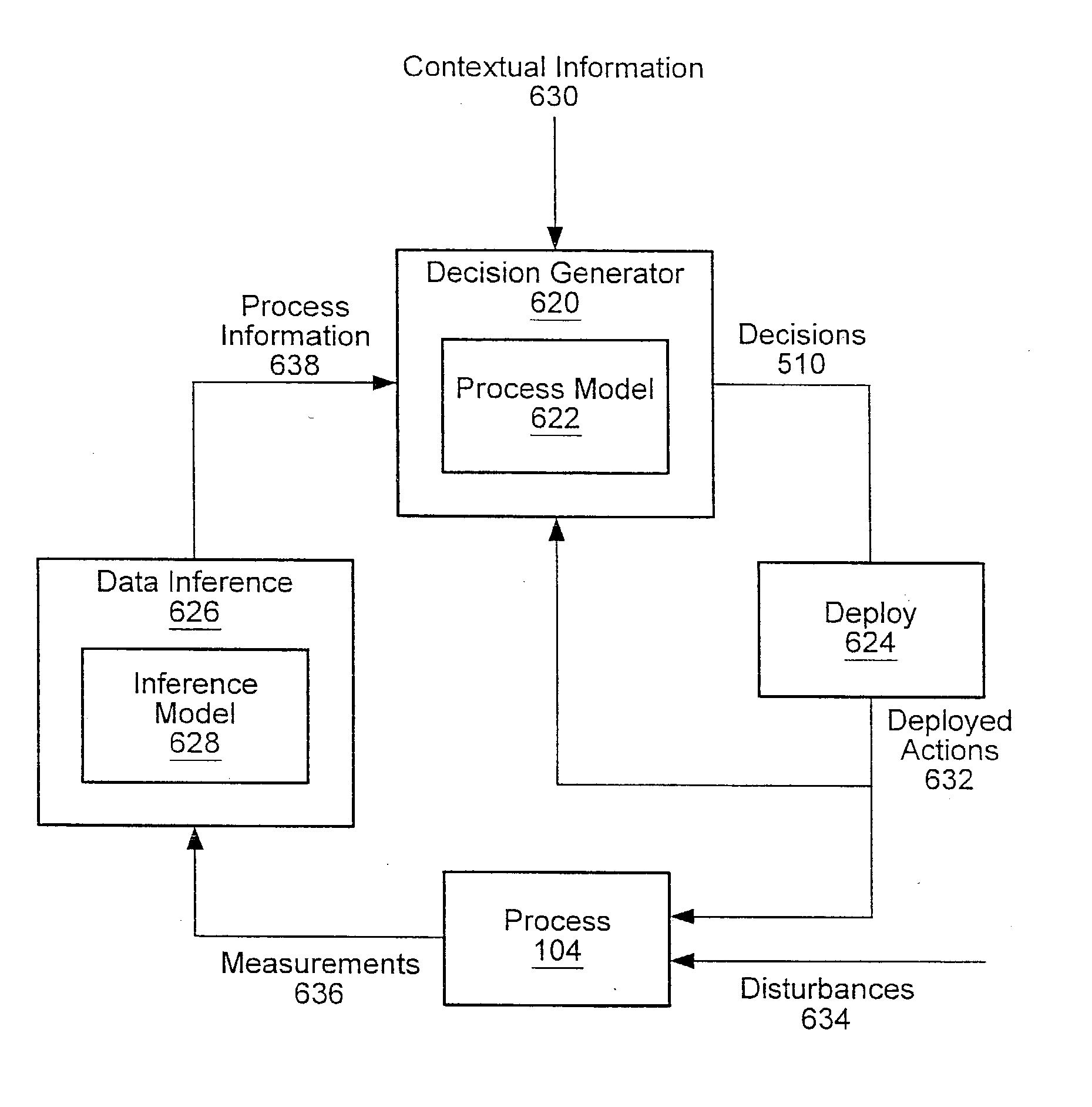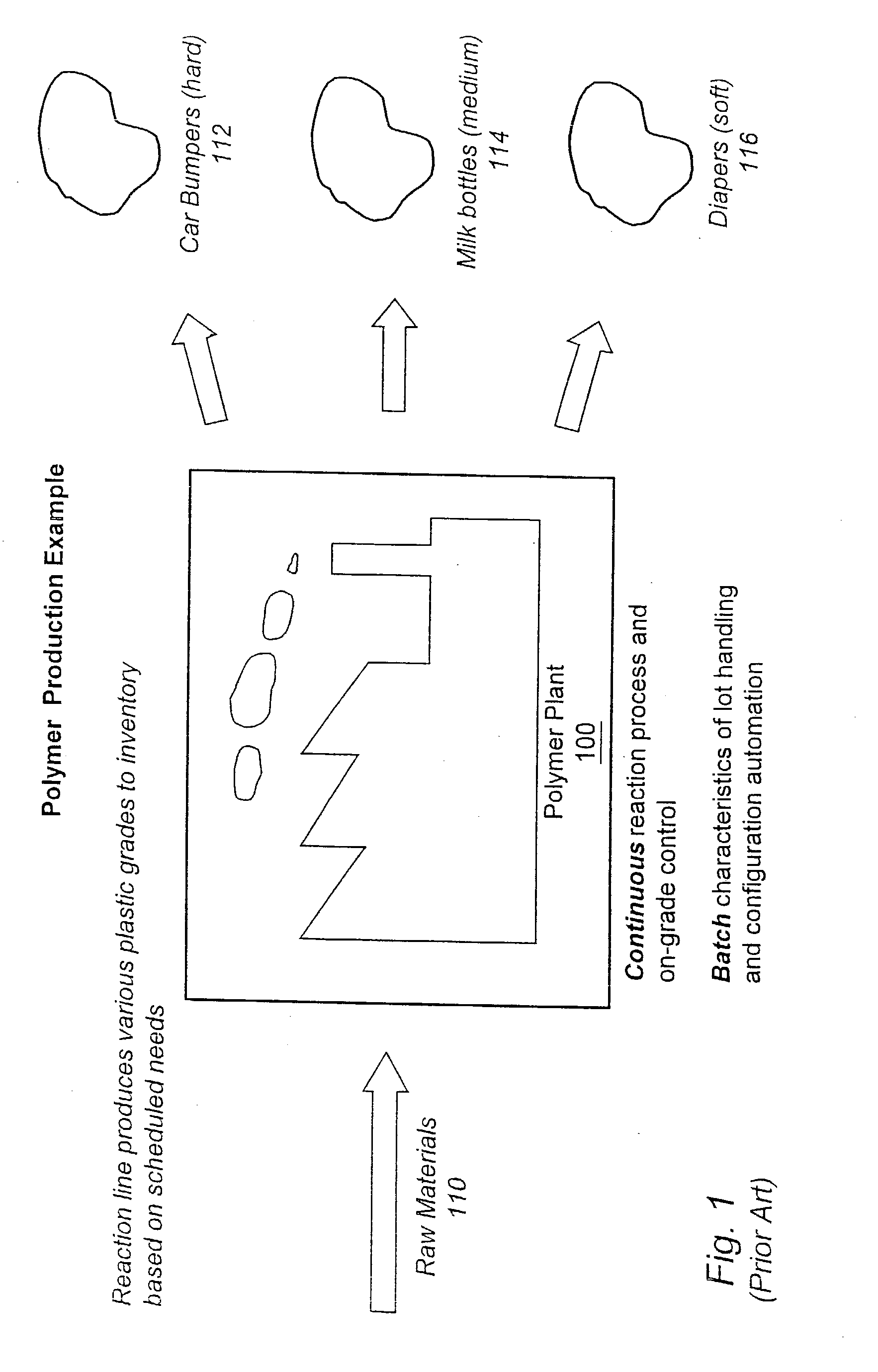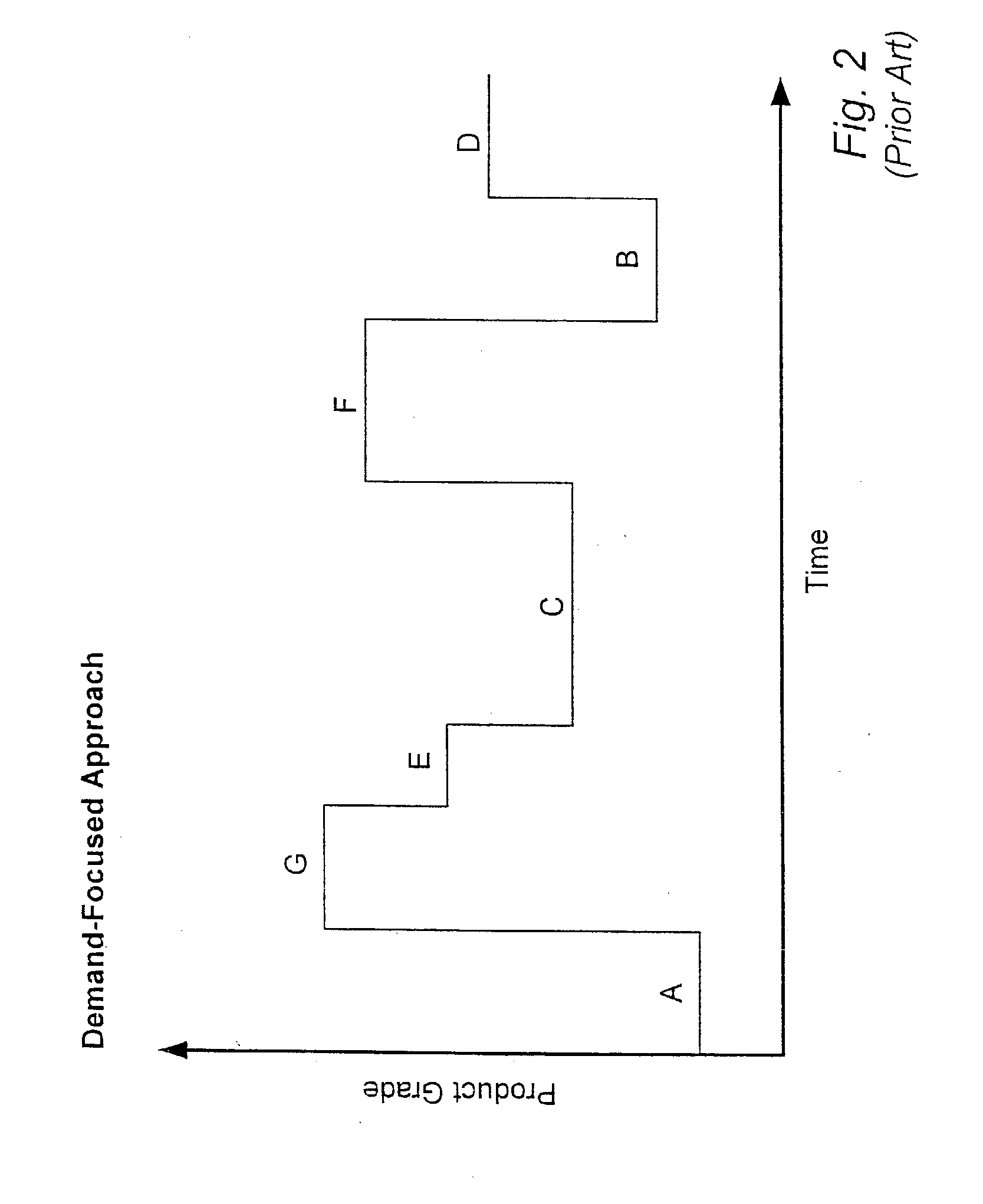Polymer production scheduling using transition models
- Summary
- Abstract
- Description
- Claims
- Application Information
AI Technical Summary
Benefits of technology
Problems solved by technology
Method used
Image
Examples
Embodiment Construction
[0049] Incorporation by Reference
[0050] The following publications are hereby incorporated by reference in their entirety as though fully and completely set forth herein.
[0051] "Large-Step Markov Chains for the Traveling Salesman Problem" by Olivier Martin, Steve W. Otto, and Edward W. Felten, published in Complex Systems, v. 5:3, pg. 299, 1991.
[0052] FIG. 4A--Transitions.
[0053] FIG. 4A illustrates in more detail the transition from the production of one grade of polymer 402 to the production of a different grade of polymer 404. As discussed previously, the polymer product produced during the transition may not meet one or more required specifications, and thus may be unusable. In one embodiment of the invention, a polymer production schedule is optimized in a manner that considers the behavior of a polymer production process 710 during the transition from one polymer grade to another. Aspects of transitions from one polymer grade to another are further described in FIGS. 4B and 4C ...
PUM
| Property | Measurement | Unit |
|---|---|---|
| Time | aaaaa | aaaaa |
Abstract
Description
Claims
Application Information
 Login to View More
Login to View More - R&D
- Intellectual Property
- Life Sciences
- Materials
- Tech Scout
- Unparalleled Data Quality
- Higher Quality Content
- 60% Fewer Hallucinations
Browse by: Latest US Patents, China's latest patents, Technical Efficacy Thesaurus, Application Domain, Technology Topic, Popular Technical Reports.
© 2025 PatSnap. All rights reserved.Legal|Privacy policy|Modern Slavery Act Transparency Statement|Sitemap|About US| Contact US: help@patsnap.com



